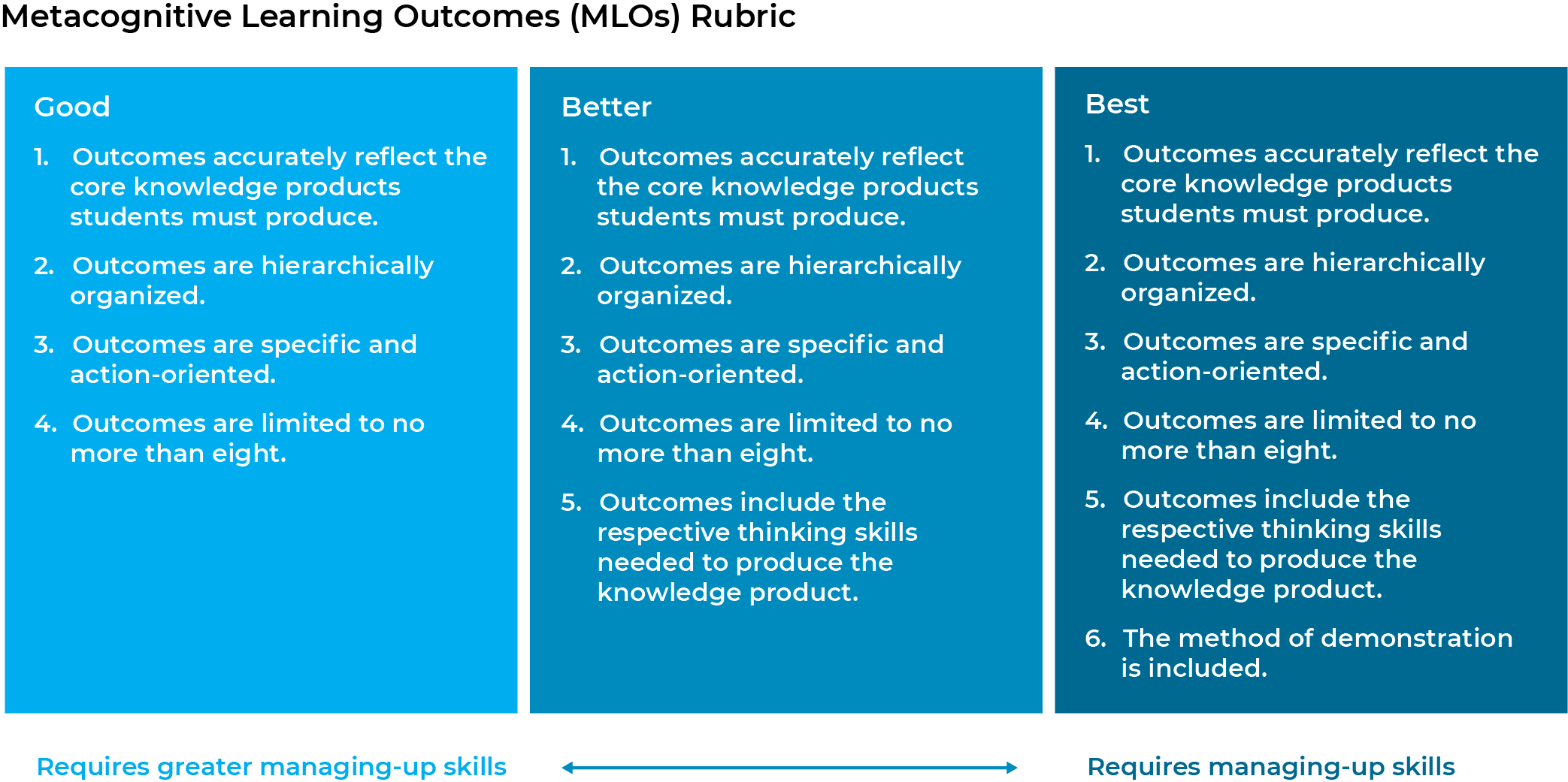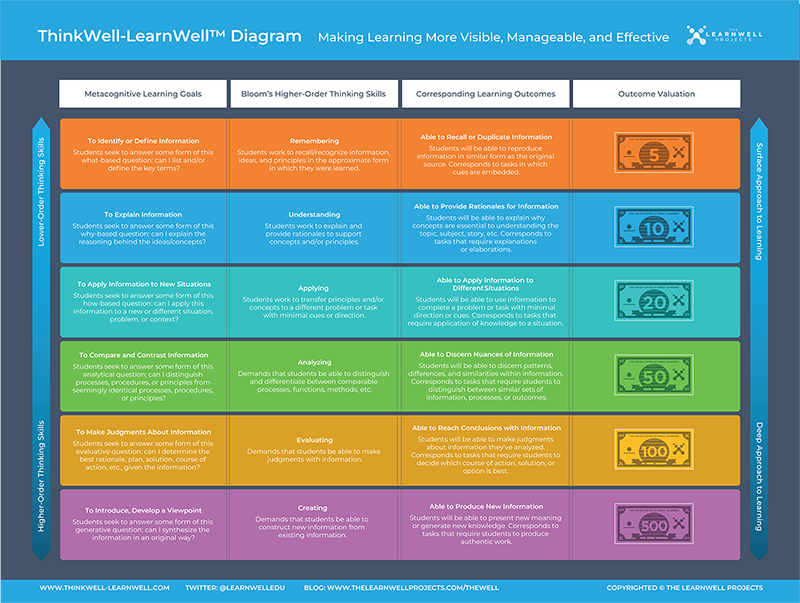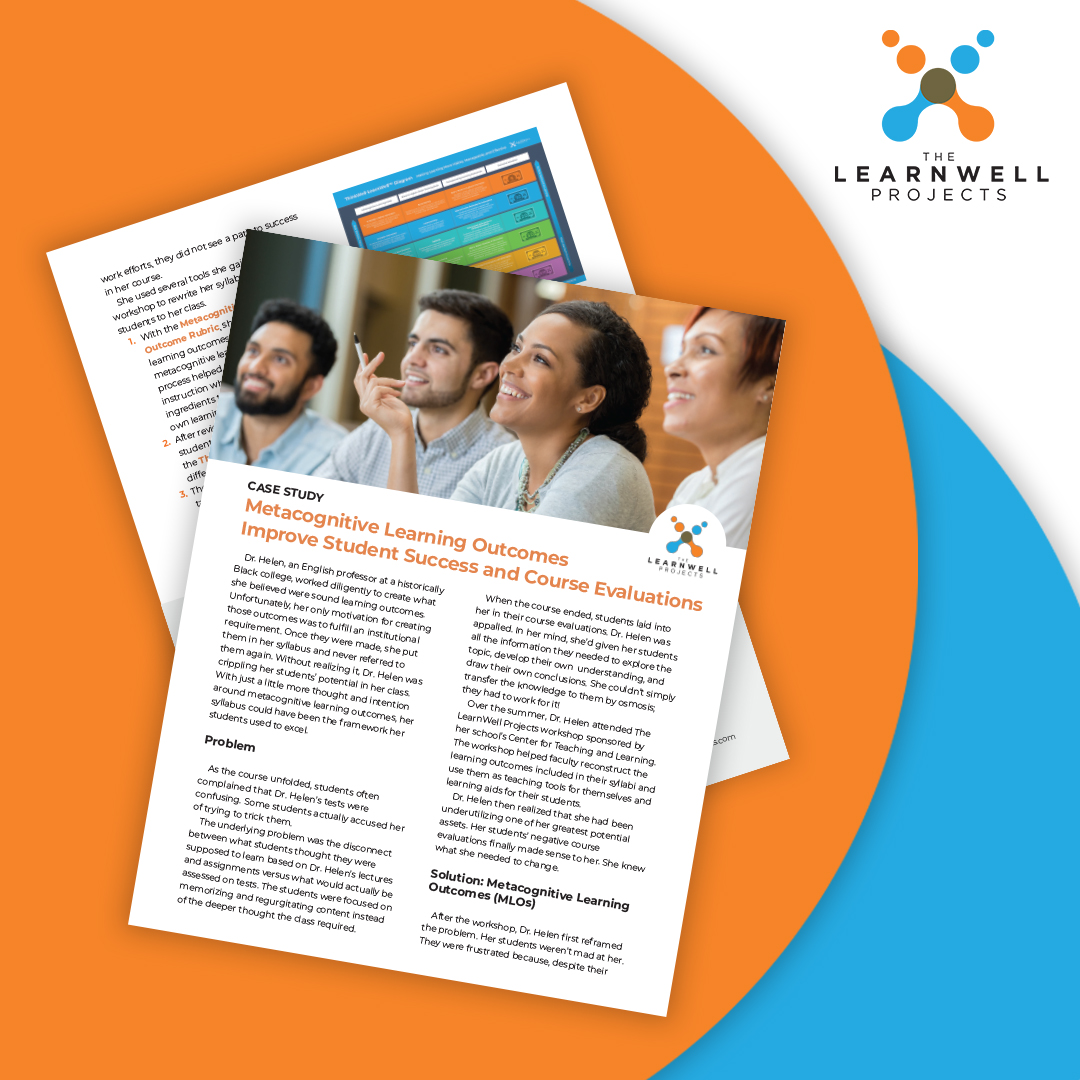Creating metacognitive learning outcomes has helped me be a much better instructor in addition to helping my students write better papers. — Dr. Helen
The underlying problem was the disconnect between what students thought they were supposed to learn based on Dr. Helen’s lectures and assignments versus what would actually be assessed on tests. The students were focused on memorizing and regurgitating content instead of the deeper thought the class required.
When the course ended, students laid into her in their course evaluations. Dr. Helen was appalled. In her mind, she’d given her students all the information they needed to explore the topic, develop their own understanding, and draw their own conclusions. She couldn’t simply transfer the knowledge to them by osmosis; they had to work for it!
Over the summer, Dr. Helen attended The LearnWell Projects workshop sponsored by her school’s Center for Teaching and Learning. The workshop helped faculty reconstruct the learning outcomes included in their syllabi and use them as teaching tools for themselves and learning aids for their students.
Dr. Helen then realized that she had been underutilizing one of her greatest potential assets. Her students’ negative course evaluations finally made sense to her. She knew what she needed to change.
She used several tools she gained in the workshop to rewrite her syllabus and introduce students to her class.
With the Metacognitive Learning Outcome Rubric, she upgraded the learning outcomes in her syllabus to metacognitive learning outcomes. This process helped clarify and focus her instruction while providing students the ingredients they needed to manage their own learning and succeed.


DOWNLOAD THE THINKWELL-LEARNWELL DIAGRAM AT THELEARNWELLPROJECTS.COM/TOOLS.
Then she used the Guiding and Gauging tactic to help students manage their work as they developed the course content into the course outcomes.
As the semester progressed and students successfully converted course content into outcomes, she explained the relationships among the daily course content, the course outcomes, and her assessments. Her students had a clear road map to success in her class.
RESULTS
With a syllabus composed of metacognitive learning outcomes, Dr. Helen and her students were working figuratively and literally from the same page. They enjoyed a complementary relationship and more interesting classroom dynamics. Her students not only worked hard, but also truly worked smart! Their diligence was rewarded with good grades and deeper understanding, which was reflected in Dr. Helen’s glowing course evaluations.
Dr. Helen then became a key leader of the university’s Center for Teaching and Learning, frequently sharing her model for creating complementary learning environments with her colleagues.

Blog Post Feedback


0 Comments